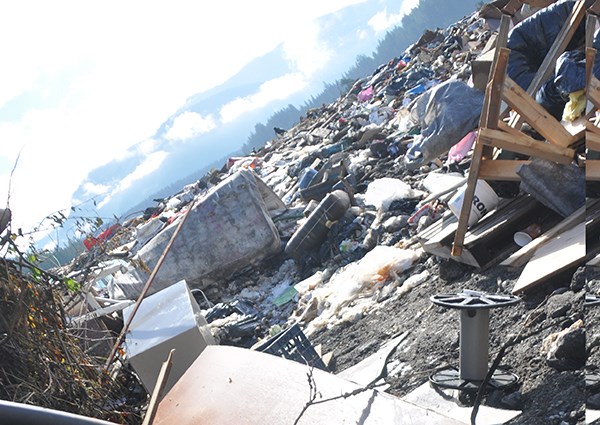The Squamish-Lillooet Regional District is amending its solid waste plan to account for greenhouse gas emissions.
The regional district board, says chair Jack Crompton, wants to understand the impact of its decisions for solid waste management on the environment.
“Inevitably, organizations manage what they measure, and we want to be an organization that measures greenhouse gases,” he said.
While local communities operate waste collection, the solid waste plan is regional in nature. “It is developed by a committee that has representatives from each community on it,” Crompton explained.
The solid waste plan is created after consulting each community for comments about what each wants included, then it goes back to the SLRD board for final approval. At the approval stage, the idea of adding greenhouse gas measurement to the solid waste management plan was raised, so the plan was amended.
As the addition of emissions is recent, there are still some questions in terms of how measuring greenhouse gas emissions would work.“The mechanisms of measurements are not something that have been clearly articulated at this point,” Crompton said. “What we’ve asked our staff to do is monitor greenhouse gas emissions.”
Staff will collect the data and inform the board through a future report on how the region is doing in terms of reducing emissions, he said.
According to an SLRD report, the regional district will conduct an annual review of emissions from solid waste operations throughout the area starting the year the plan is adopted.
Much of the impetus, Crompton said, has come from Squamish Mayor Patricia Heintzman, who sits on the SLRD board.
She reiterates the idea that the region wants data to know if its actions to reduce greenhouse gases are effective.
“If you’re not calculating that, you just have no idea,” she told The Squamish Chief. “Waste is a huge contributor to greenhouse gases.”
The mayor said that while the district does not generate the landfill waste, it does collect it, and it makes sense to look at ways to reduce material going into the landfill.
“We provide the service but don’t produce the gases,” she said.
Last year, the District of Squamish started curbside organics collection for compost to divert the organics waste from the landfill. These materials have been a major contribution of methane, which builds up as the organic garbage breaks down at landfills.
“Any time you’re talking about solid waste, you need to factor in greenhouse gases,” Heintzman said.
Locally, the amount of emissions from this source, Heintzman estimates, is roughly 14 times the amount produced by all district operations, including buildings and the vehicle fleet.
Heintzman said the data will provide a better idea about how much is produced and what needs to be done in terms of purchasing carbon offset credits.
Eventually, the ideal situation would be for the community to direct its carbon offset credits toward local green businesses.
“It goes into employing people, and you can see that carbon reduction locally,” the mayor said.




